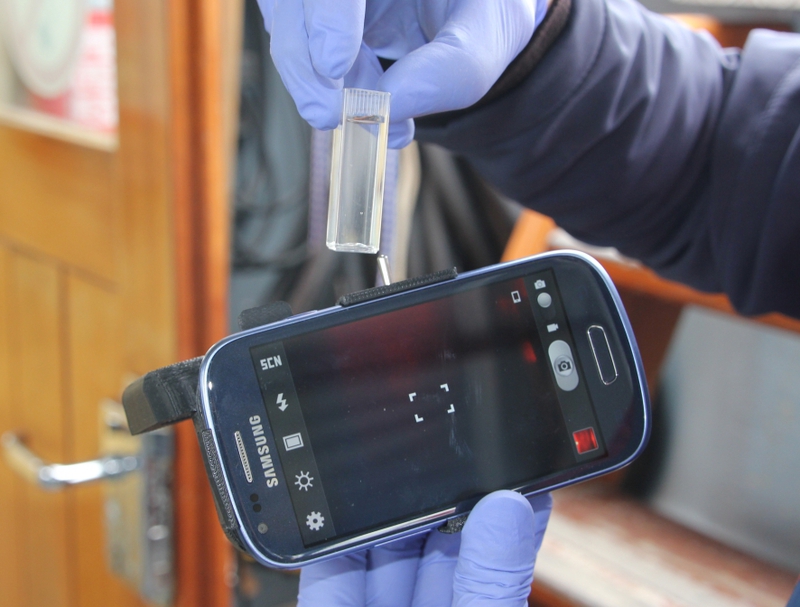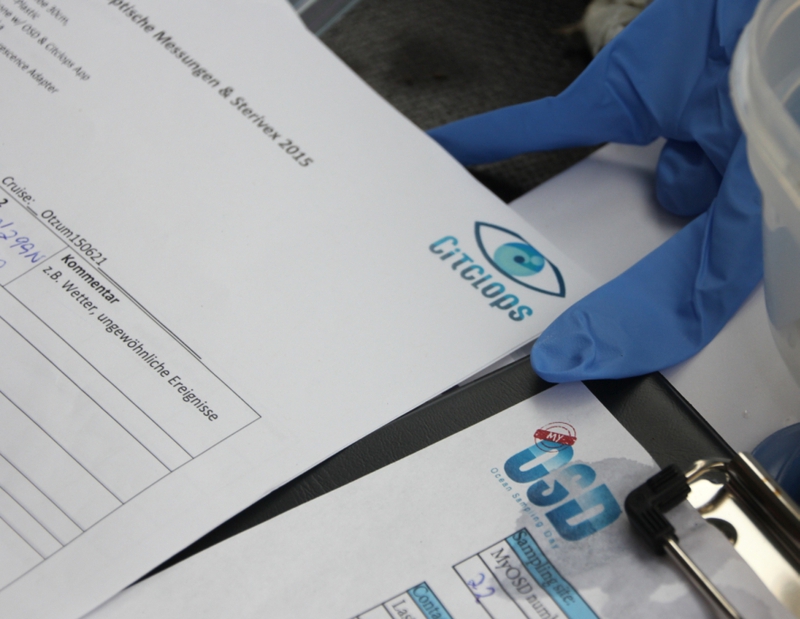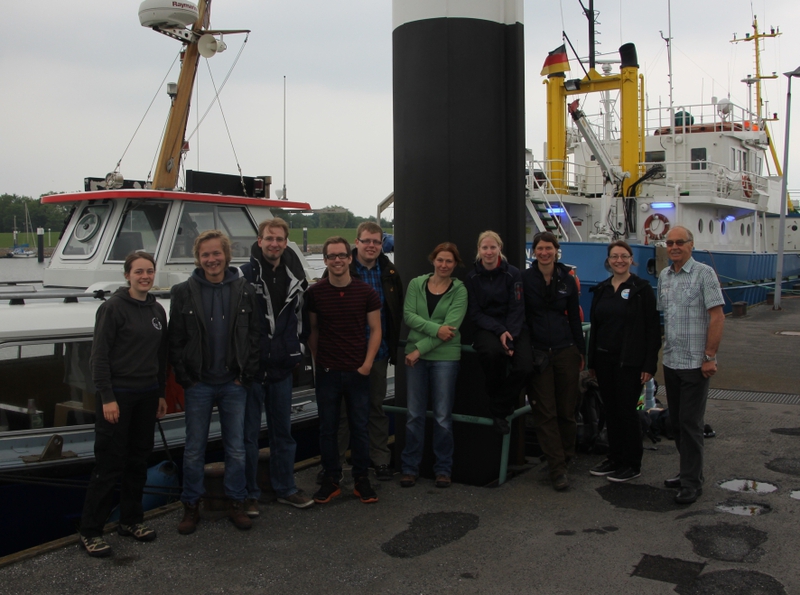OSD 2015 meets Citclops – Smart phone Apps for combined citizen science
 Wilhemshaven/Germany. Initiated by the EU-project Marine Microbial Biodiversity, Bioinformatics and Biotechnology (Micro B3) the Ocean Sampling Day (OSD) 2015 took place for the second time (www.microb3.eu). This worldwide campaign aims to sample the genetic diversity of the microbial life in the ocean. The activity of those tiny marine organisms is particularly high at the lightest day of the northern hemisphere, the day of the summer solstice on 21st June. About 191 marine research institutions around the world took surface samples at this day – whether in the Arctic, on Helgoland or at the coasts of New Zealand or the USA. Like last year, a Citclops team participated with measurements on their Wadden Sea site (OSD_148) on the ICBM research vessel Otzum.
Wilhemshaven/Germany. Initiated by the EU-project Marine Microbial Biodiversity, Bioinformatics and Biotechnology (Micro B3) the Ocean Sampling Day (OSD) 2015 took place for the second time (www.microb3.eu). This worldwide campaign aims to sample the genetic diversity of the microbial life in the ocean. The activity of those tiny marine organisms is particularly high at the lightest day of the northern hemisphere, the day of the summer solstice on 21st June. About 191 marine research institutions around the world took surface samples at this day – whether in the Arctic, on Helgoland or at the coasts of New Zealand or the USA. Like last year, a Citclops team participated with measurements on their Wadden Sea site (OSD_148) on the ICBM research vessel Otzum.
 As a novel aspect, measurements with the Citclops water colour App were integrated by many OSD participants worldwide this year. The contributions of researchers and citizens at the OSD and the following day (21st – 22nd June) resulted in a large peak of 60 additional measurements on the Citclops map of water colour. “The connection between Micro B3 and Citclops with the aim to cover a large spatial scale with combined measurements on one day is perfect.”, says Dr. Julia Busch who is Citclops contact at the Institute for Chemistry and Biology for the Marine Environment (ICBM) of the University of Oldenburg. Both projects developed smart phone Apps which make participation in ocean research more attractive for citizens.
As a novel aspect, measurements with the Citclops water colour App were integrated by many OSD participants worldwide this year. The contributions of researchers and citizens at the OSD and the following day (21st – 22nd June) resulted in a large peak of 60 additional measurements on the Citclops map of water colour. “The connection between Micro B3 and Citclops with the aim to cover a large spatial scale with combined measurements on one day is perfect.”, says Dr. Julia Busch who is Citclops contact at the Institute for Chemistry and Biology for the Marine Environment (ICBM) of the University of Oldenburg. Both projects developed smart phone Apps which make participation in ocean research more attractive for citizens.
This year, a Citclops team distributed MyOSD Sampling Kits to interested citizens. These kits contain all items for biodiversity measurements - from gloves to a thermometer and sample bottles. Environmental results of these measurements are then uploaded by means of the OSD App. Like in Citclops, the combination of sampling and the usage of the App provides the samples with important environmental parameters and further metadata, e. g., the location of the sampling. In the framework of Citclops several Apps were developed to examine the water quality of the ocean, including a fluorescence App as well. Anna Friedrichs, PhD student of the working group Marine Sensor Systems of the ICBM, developed a fluorescence adapter for smart phones within Citclops. The OSD 2015 gave her the opportunity to test the adapter in the field.
 We thank all participants of the OSD 2015 for their Citclops contributions!
We thank all participants of the OSD 2015 for their Citclops contributions!
